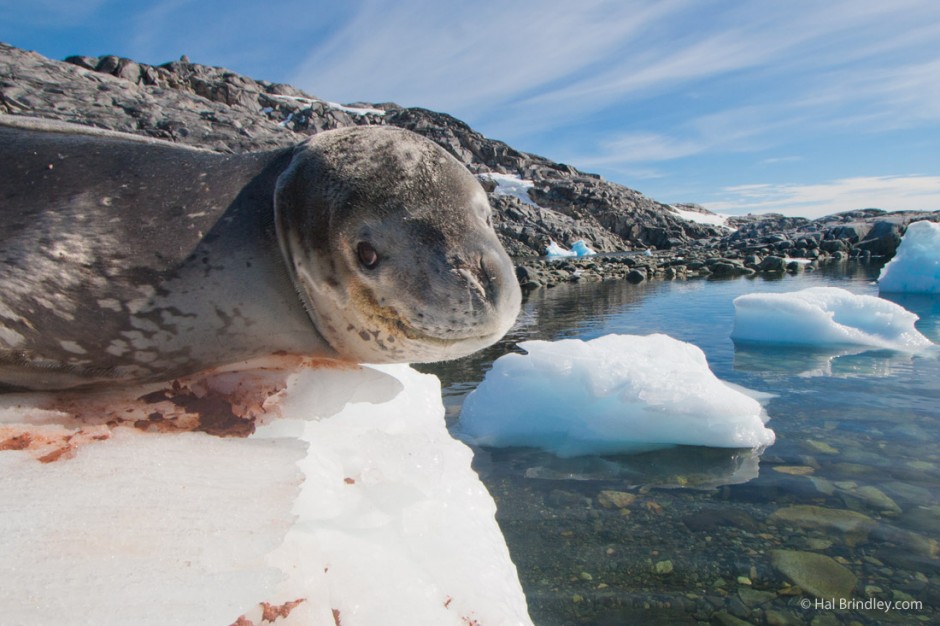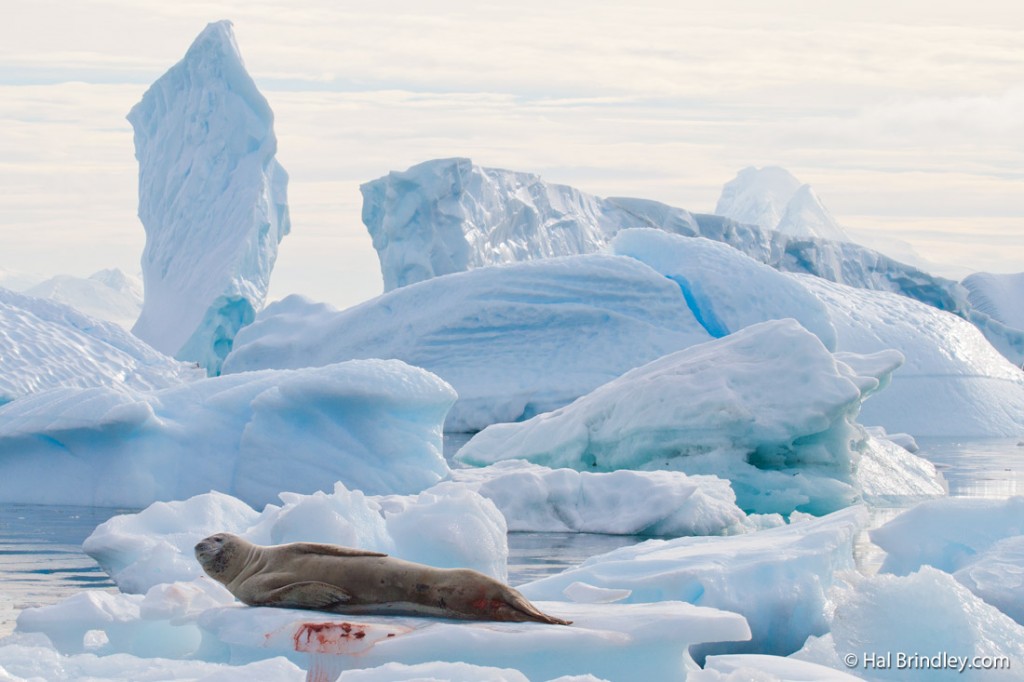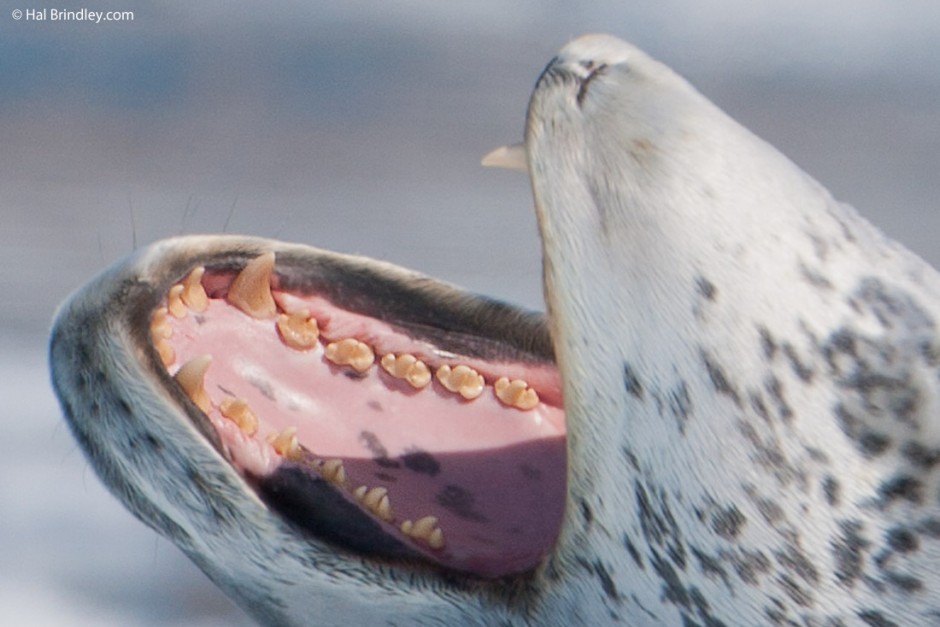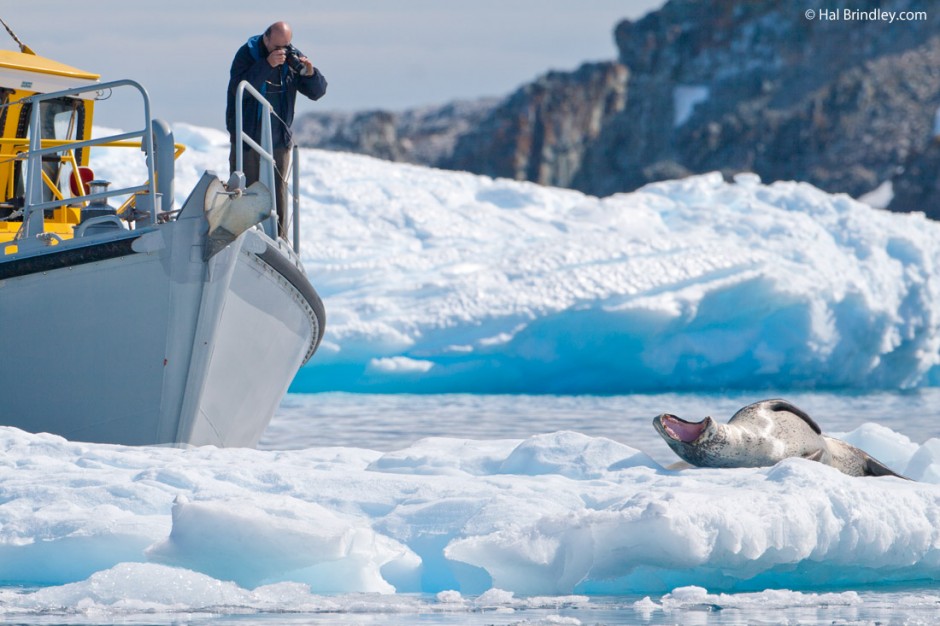Scientific name: Hydrurga leptonyx
1) Fierce as a leopard
Leopard seals are named after their spotty coats and for their reputation of being fearsome hunters. It is one of the top predators in Antarctic waters, filling the niche that polar bears hold in the Arctic.

2) Predator and prey
It is the only pinniped that feeds extensively upon warm-blooded animals. They, in turn, are sometimes preyed upon by orcas (killer whales), another warm-blooded animal.

3) The unique dentition of a leopard seal
The unique dentition of the leopard seal allows them to have a surprisingly varied diet.
Their front canines and incisors are designed to capture and tear prey like other seals (crabeater seals and Antarctic fur seal pups), seabirds, and penguins (mostly Adélie penguins). Their back molars present interlocking cusps to strain krill (a shrimp-like crustacean) out of seawater. Although leopard seals are powerful predators, tiny krill actually make up the majority of their diet.

Other food items include cephalopods, fish and squid and they are known to scavenge upon dead whales and other seals.
4) Graceful swimmers
Unlike other “true” seals (the phocid family) that swim by moving their hind limbs from side to side, leopard seals swim gracefully using powerful, long, and simultaneous strokes of the forelimbs in a manner similar to the “eared” seals (otariids) like sea lions.


Hal Brindley
Brindley is an American conservation biologist, wildlife photographer, filmmaker, writer, and illustrator living in Asheville, NC. He studied black-footed cats in Namibia for his master’s research, has traveled to all seven continents, and loves native plant gardening. See more of his work at Travel for Wildlife, Truly Wild, Our Wild Yard, & Naturalist Studio.
